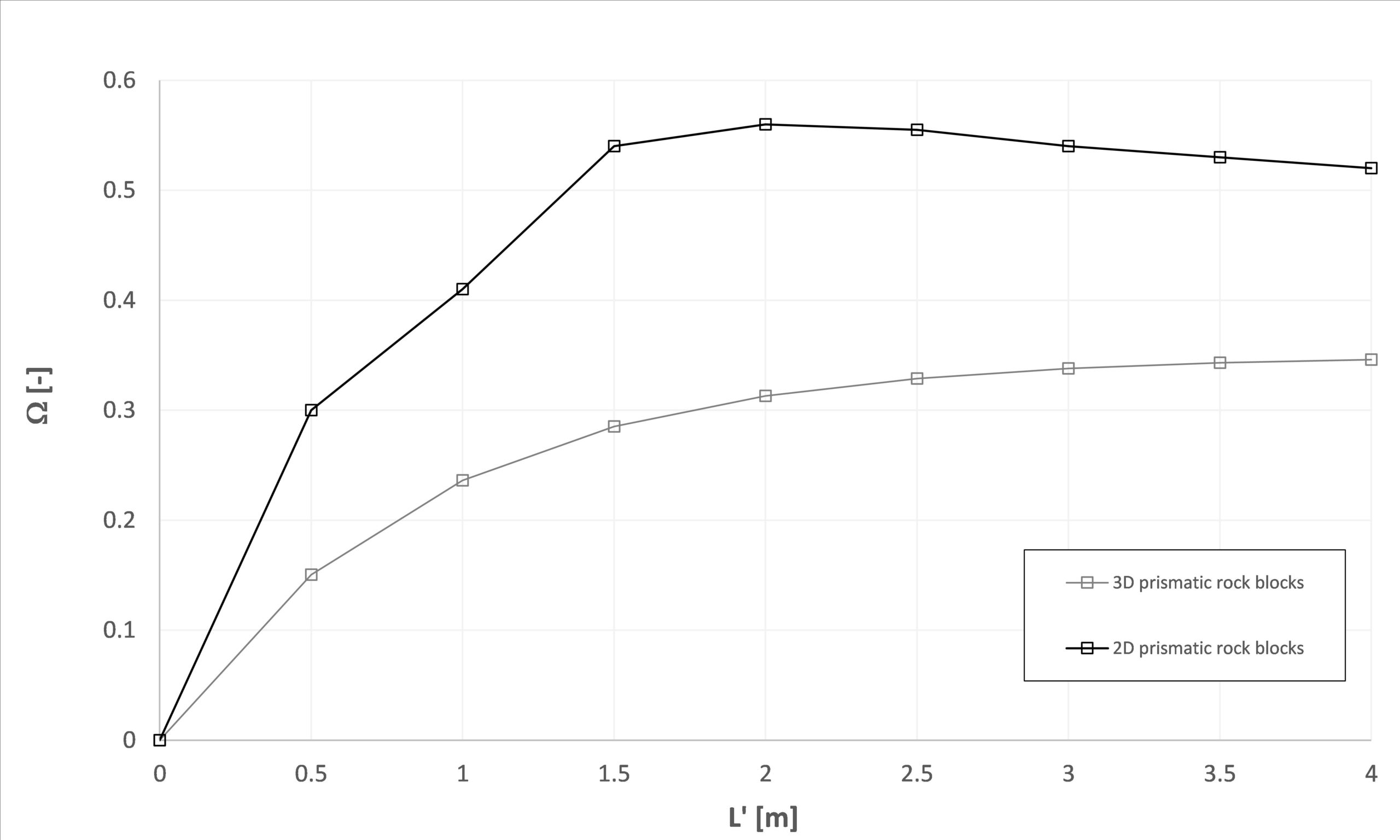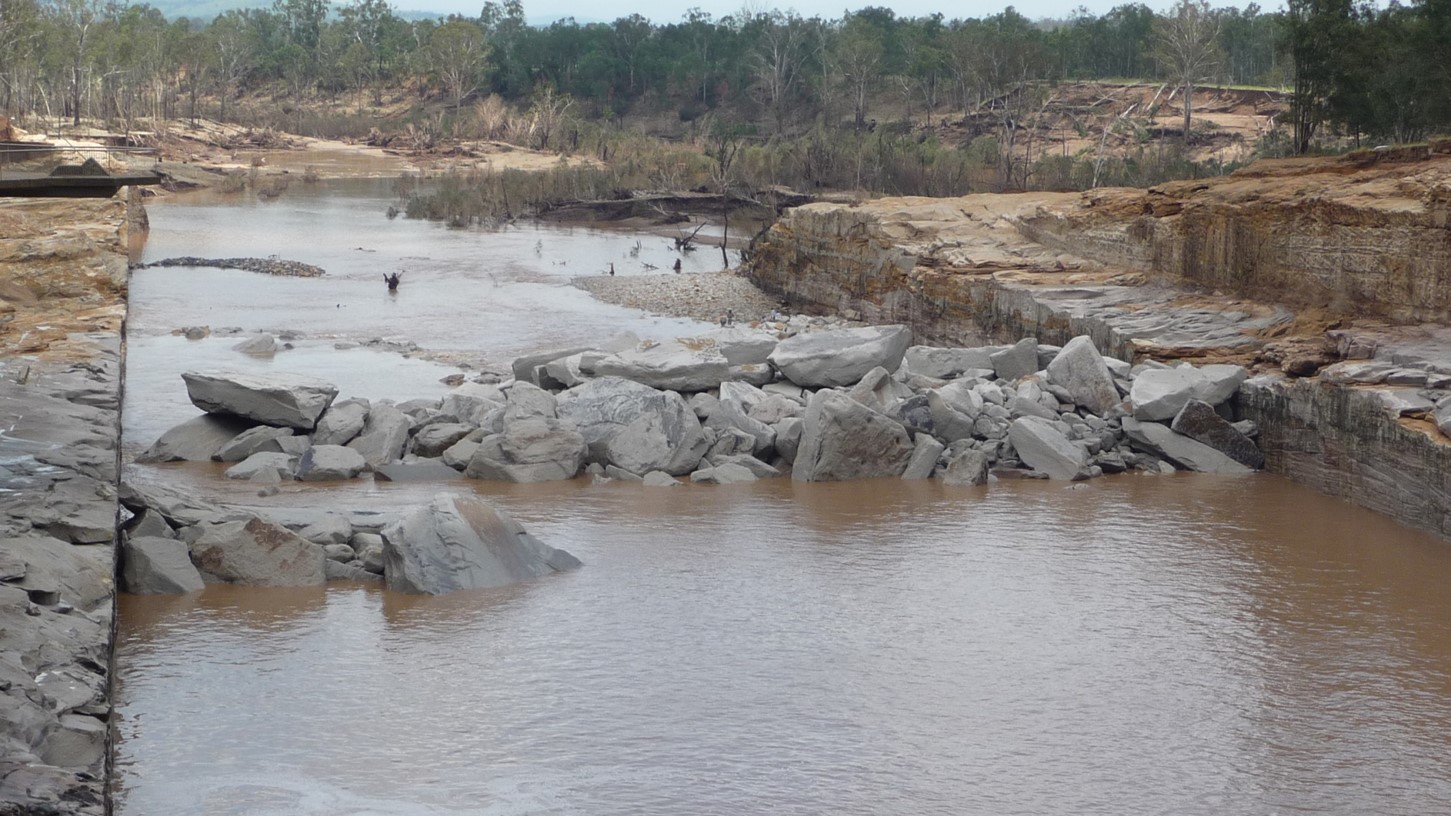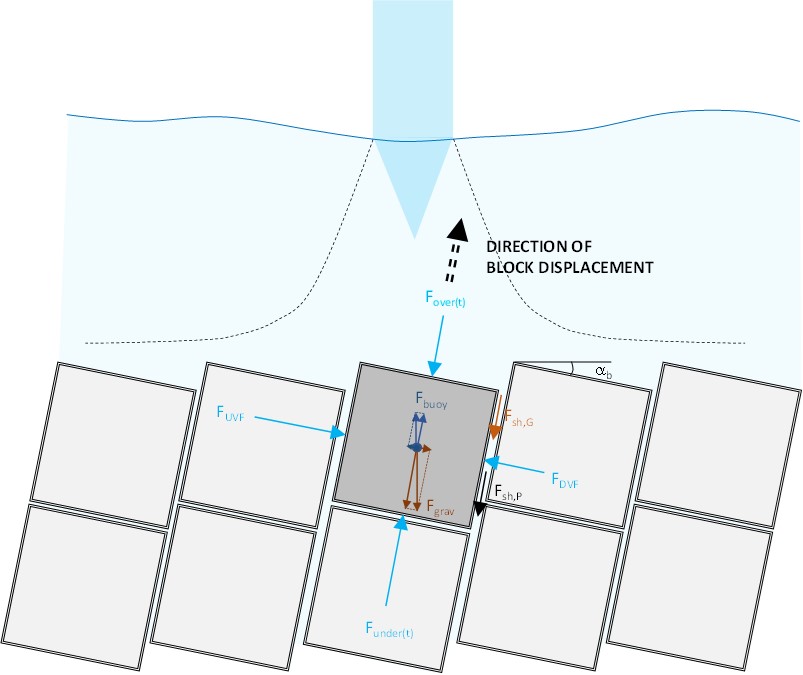
Background
A new pressure-based computational method has been implemented based on the research performed by S. Maleki and V. Fiorotto and described in their paper “Blocks Stability in Plunge Pools under Turbulent Rectangular Jets”, Journal of Hydraulic Engineering, vol. 145(4), 2019.
Maleki & Fiorotto (2019) compute the uplift forces on rock blocks based on small-scale laboratory measurements of mean and fluctuating dynamic pressures generated by a jet impinging onto a pool bottom, for different Y/Dj ratios, and by analytical determination of the jet characteristics in the fully developed flow region. This is done by use of the length of the submerged jet in both the flow development and fully developed jet region of the plunge pool, as well as use of the corresponding jet width at those depths.
By accounting for the pressure correlation functions in both the streamwise and transversal directions, they express the standard deviation of the net fluctuating uplift forces on a block as a function of the maximum standard deviation of the fluctuating pressure on the block, by means of an Ω coefficient. Furthermore, they make use of the ratio of the maximum net uplift pressure coefficient on a block to the RMS coefficient of the fluctuating pressures on the block.
Their approach is restricted to the determination of the net uplift force on a block and to the necessary thickness of a stable block, accounting for its submerged weight, in which stability is obtained when the submerged weight counteracts the net uplift force. Their theory has been extended on the X_pl@re platform to 2D scour computations for rock blocks as outlined hereafter.
The X_pl@re implementation…
The X_pl@re digital platform offers a 2D numerical implementation of the above described research. This implementation is based on the use of the local dynamic pressure coefficients over the computational domain and allows to express the ultimate scour depth as the one for which the user-defined rock block is not uplifted anymore. This is performed along the longitudinal X-axis of the computational domain, defining a 2D scour hole shape.
Moreover, the main parameters of the approach are fully user-definable, allowing for example to adapt the scour threshold to the type and shape of rock blocks, in agreement with the original research.
This novel computational method has been soundly calibrated by applying it to the Stellenbosch’ physical model tests of rock block scour due to impinging jets and to the scour hole generated at Wivenhoe Dam following its unprecedented 2011 flood event.


Forces on the rock block
The net force Fnet(t) acting on the rock block at each time instant Dt is decomposed into fluctuating dynamic pressure forces acting under and over the block, buoyancy forces, gravity forces, and finally shear forces along the vertical joints based on the weight and the buoyancy (for oblique joint sets) and based on differential pressures along the upstream and downstream vertical faces of the block.
